This series is cross-posted with the permission of Book of Mormon Central
from their website at Pearl of Great Price Central
Audio Player

Figure 1. Illustration of Adam and Eve within an Old English manuscript of Genesis 3, ca. 1020–1040.
Knowledge as the Prize in Adam and Eve’s Test of Obedience
In this essay we will describe in detail the immediate consequences of the transgression in the Garden of Eden:
- “The eyes of them both were opened”
- “They knew they had been naked”
- The false apron
- The Tree of Knowledge as a symbol of death and rebirth
The Eyes of Them Both Were Opened”
We read in Moses 4:13 that after Adam and Eve had eaten of the forbidden fruit, “the eyes of them both were opened, and they knew that they had been naked. And they sewed fig leaves together and made themselves aprons.” The ending of the verse implicitly signals to the reader that the making of the aprons is the culminating event in the story. However, Emily Mahan observes that the Old English manuscript shown above punctuates the verse differently, with three dots in triangle form, highlighting the importance of the opening of the eyes of Adam and Eve: “and the eyes of them both were opened .·.” She notes that:
The punctuation mark [i. e., “.·.”] is the “strongest” punctuation mark in the scribe’s repertoire. Used infrequently compared to the single punctus, it represents the biggest pause. And that is the last line on the page (although there is in fact space for at least a couple more words). The reader must pause here at the moment when the eyes of the first human beings are opened, and lift their own eyes to the top of the next page. This page begins with an image: the naked Eve and Adam, Adam in the act of eating the fruit, the serpent in a tree to the left. The text resumes below it, midway through Genesis 3:7, with a large colored initial that, combined with the previous punctuation and page change, suggests that this should be considered a significant break in the text, and that something new is beginning.
In other Old Testament instances, events where the eyes are opened connote a sudden vision of hidden things.[1] Partaking of the fruit of the tree allowed Adam and Eve to begin to experience and distinguish good from evil—the “opposition in all things” described in 2 Nephi 2:11. Note that in demonstration of her new capacity for discernment, Eve immediately “sees through Satan’s disguise of clever hypocrisy, identifies him, and exposes him for what he is.”[2]
They Knew They Had Been Naked”
By the change that happened when their eyes were opened, Adam and Eve realize that they “had been naked.”[3] The Book of Mormon prophet Jacob equates a “perfect knowledge” of “nakedness” with “guilt” and “uncleanness” while associating the perfect knowledge of the “righteous” with “enjoyment” and “being clothed with purity, yea, even with the robe of righteousness.”[4]
Unlike the richly described, finely nuanced account of the temptation dialogue, the tightly coupled chain of verbs that follow it (“took,” “eat,” “gave,” “eat”) “indicate rapid, single-minded action”—nothing more is said, seen, or felt until the moment the eyes of Adam and Eve are opened.[5] Then, at once, the hurried action restarts (“sewed,” “made”)—all the frantic movements proclaiming loudly, by their silent execution, the anguished undertone of shame and fear—“the physical act… as an expression of an inner state of an alarm.”[6] The desired effect of this economical yet artful mode of narrative construction is to help the perceptive reader understand that the Lord God, Adam and Eve’s benevolent provider, who has been absent from their minds throughout the previous episode, has now reentered their thoughts with painful effect.
The False Apron
The derivation of the Hebrew term for apron (˙agorah), sometimes translated as “girdle,” confirms that this was an article of clothing intended to “enclose and cover the area of [the] lap or loins.”[7] The fig tree has unusually large and strong leaves and its fruit is known for its abundance of seeds. Thus, an apron of green fig leaves is an appropriate symbol for Adam and Eve’s ability to procreate, to “be fruitful and multiply”[8] after the Fall.
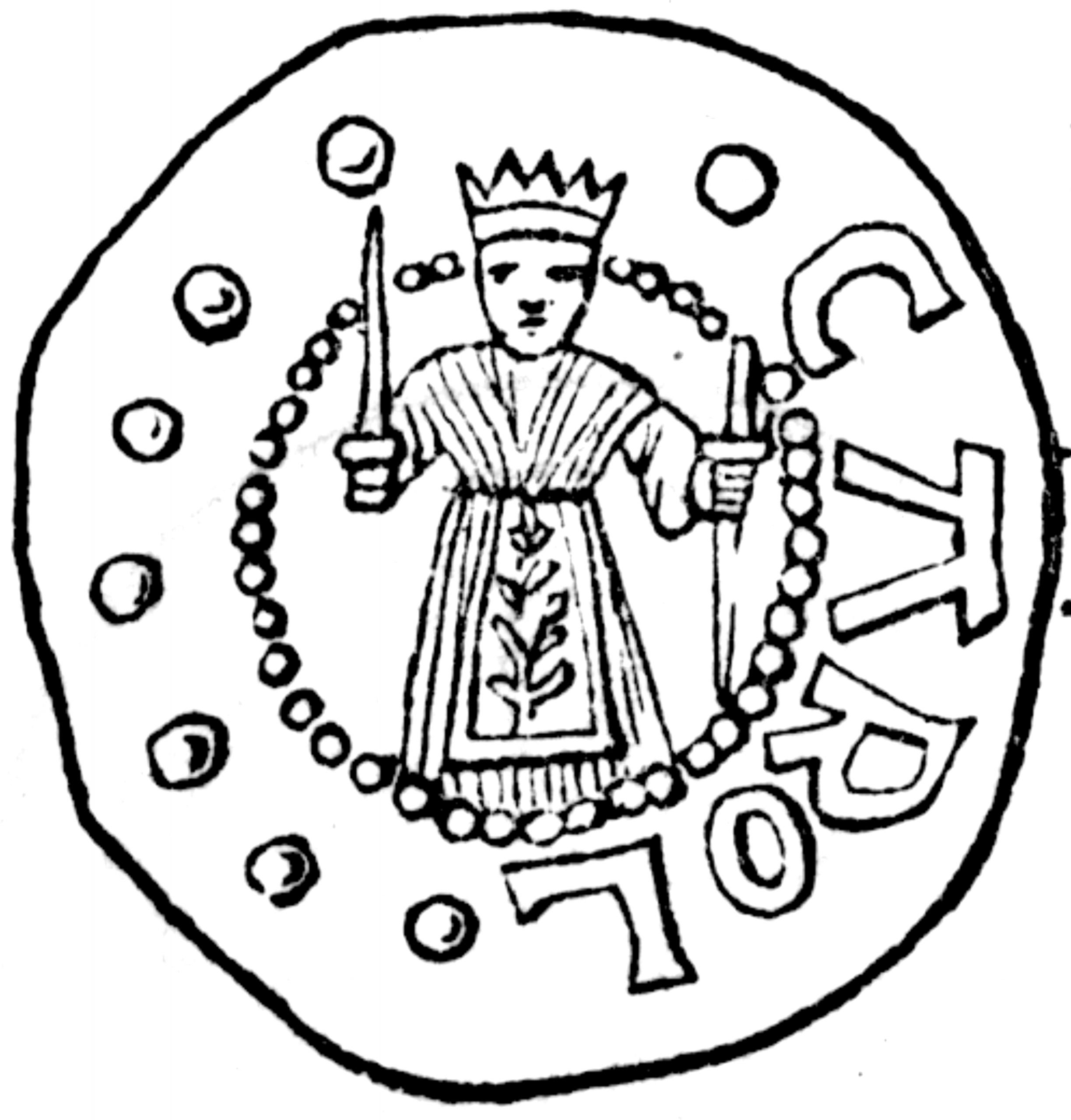
Figure 2. Sacred Tree on the Apron of Charlemagne, 8th century
Ostensibly, the aprons functioned to hide Adam and Eve’s nakedness—but is there more to the story than this? Ancient readers would have recognized the function of aprons in ritual context as a sign of power and authority. For example, a sacred tree was symbolically represented on an apron worn by the eighth-century Christian king Charlemagne, as in the figure above.[9] In both Egypt and Mesoamerica,[10] foliated aprons were also used as a sign of authority, and kings in the Near East were often described as various sorts of trees.[11]
In Moses 4:27, God Himself will be the one to clothe Adam and Eve, whereas in Moses 4:13 we were told that Adam and Eve “made themselves aprons.” Like their tasting of the forbidden fruit,[12] the endeavor of Nimrod to build a tower to “reach unto heaven,”[13] Sarah’s essay to realize the blessing of posterity through her handmaiden Hagar,[14] and Rebekah’s disguising of Jacob to assure that he would receive the birthright blessing,[15] this action exemplifies the “recurring theme… of the attempt and failure of human effort in obtaining a blessing that only God can give.”[16]
It is perfectly in character for Satan to have planted the suggestion of making their own aprons in the mind of Adam and Eve, since he often appropriates false signs of power and priesthoods for himself in order to deceive.[17] Thus, we are not surprised to find the Zohar associating Adam and Eve’s fig leaves with a knowledge of “sorcery and magic,” false forms of “protection” and counterfeits of the true priesthood.[18] Moreover, it is consistent with the plan of the Adversary to encourage sinners to flee from the presence of God rather than to reconcile and return to Him.[19]
In this instance, the contrast between the false apron made from leaves and the true clothing later made from the skins of animals seems paralleled in the story of Cain and Abel, where the former makes an unacceptable offering from the fruits of the ground while the latter follows the God-given pattern of animal sacrifice.[20] Matthew B. Brown also reminds us about the lambskin aprons of the warring Lamanites in the Book of Mormon, bringing to mind the Lord’s warning about “false prophets which come to you in sheep’s clothing.”[21]
Note that Satan made three attempts to mislead Adam and Eve by false appearances. First, he made claims that confused the identities of Tree of Knowledge and the Tree of Life. Second, he appeared as a serpent, deceptively employing a symbol of Christ. Finally, in the episode of the fig-leaf aprons, he suggested a course of action to Adam and Eve that substituted a self-made emblem of power and priesthood for the true article obtainable only when authorized by God.
The Tree of Knowledge as a Symbol of Death and Rebirth
When Adam and Eve heard the voice of the Lord, the English text says that they “went to hide themselves from the presence of the Lord God amongst the trees of the garden.”[22] However the Hebrew for “tree,” etz, can be read as singular or plural in this verse—an important subtlety glossed over in nearly every Bible translation. As a rare exception, André Chouraqui’s French edition holds to a careful rendering of the key phrase describing Adam and Eve’s place of concealment: “in the center of [i.e., within] the tree of the Garden.”[23] As Kastler observes, “they are not merely touching the [Tree of Knowledge] but they have for all intents and purposes merged with it … The tree has become their refuge—or perhaps their prison.”[24] They have experienced a kind of death.[25]
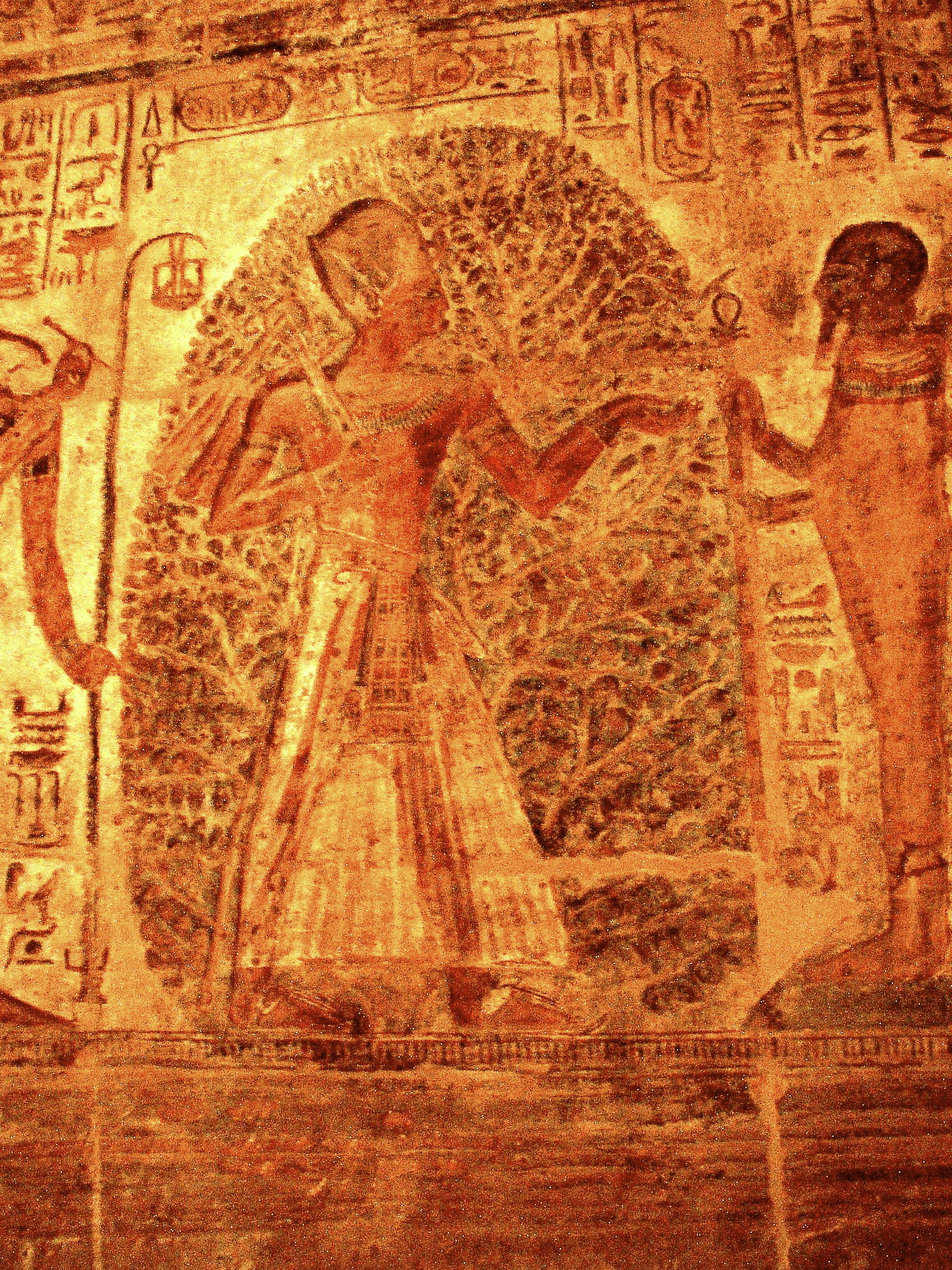
Figure 3. Alain Guilleux, 1966-: Ramesses II in the Ished-tree, 13th century BCE
The image of the guilty parties, Adam and Eve, figuratively being shut up in a tree can be better understood when compared with Egyptian motifs, such as the one evoked by the figure of Ramesses II acting in the role of Osiris, as shown above.[26] Nibley also mentions “Book of the Dead vignettes showing the Lady incorporated—all but her upper part, and in many cases all but her arms only—in the fruit-bearing tree [suggesting] that the woman in the tree must actually have been eaten by it; she is the first victim, so to speak, and now invites her male companion to share her condition.”[27]
Happily, the condition of “death” suggested by the symbolism of captivity in the tree is only temporary. In ancient year-rites in Egypt, the eventual splitting of the tree “both terminates life and liberates it,” allowing the captive initiate to be reborn.[28] The splitting of the tree also is said by Nibley to represent, “among other things, the ‘splitting of ‘good’ and ‘evil,’” or the law of opposites.”[29]
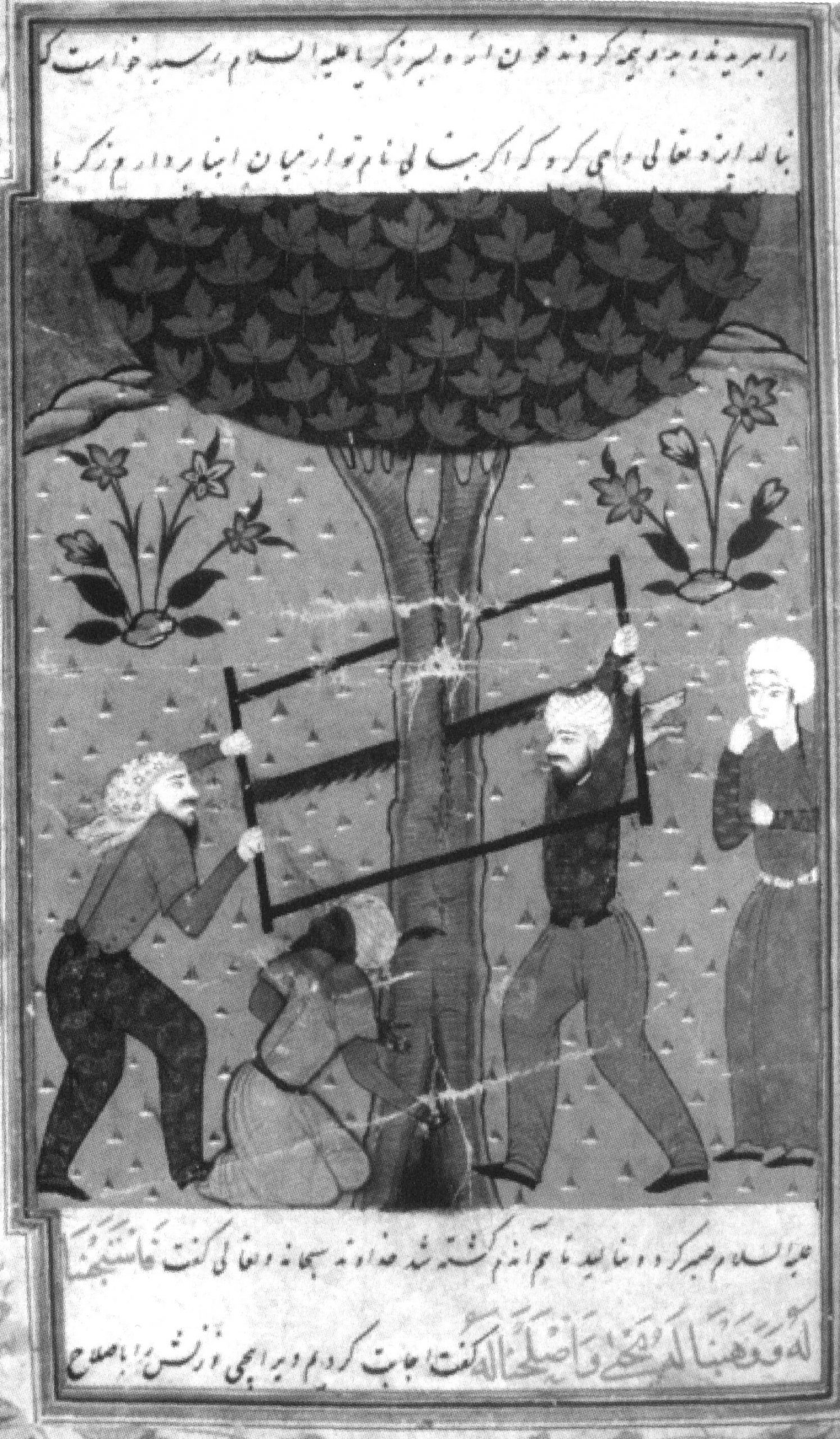
Figure 4. Zakariya, Hidden in a Tree, Sawed in Two by His Enemies, 1577
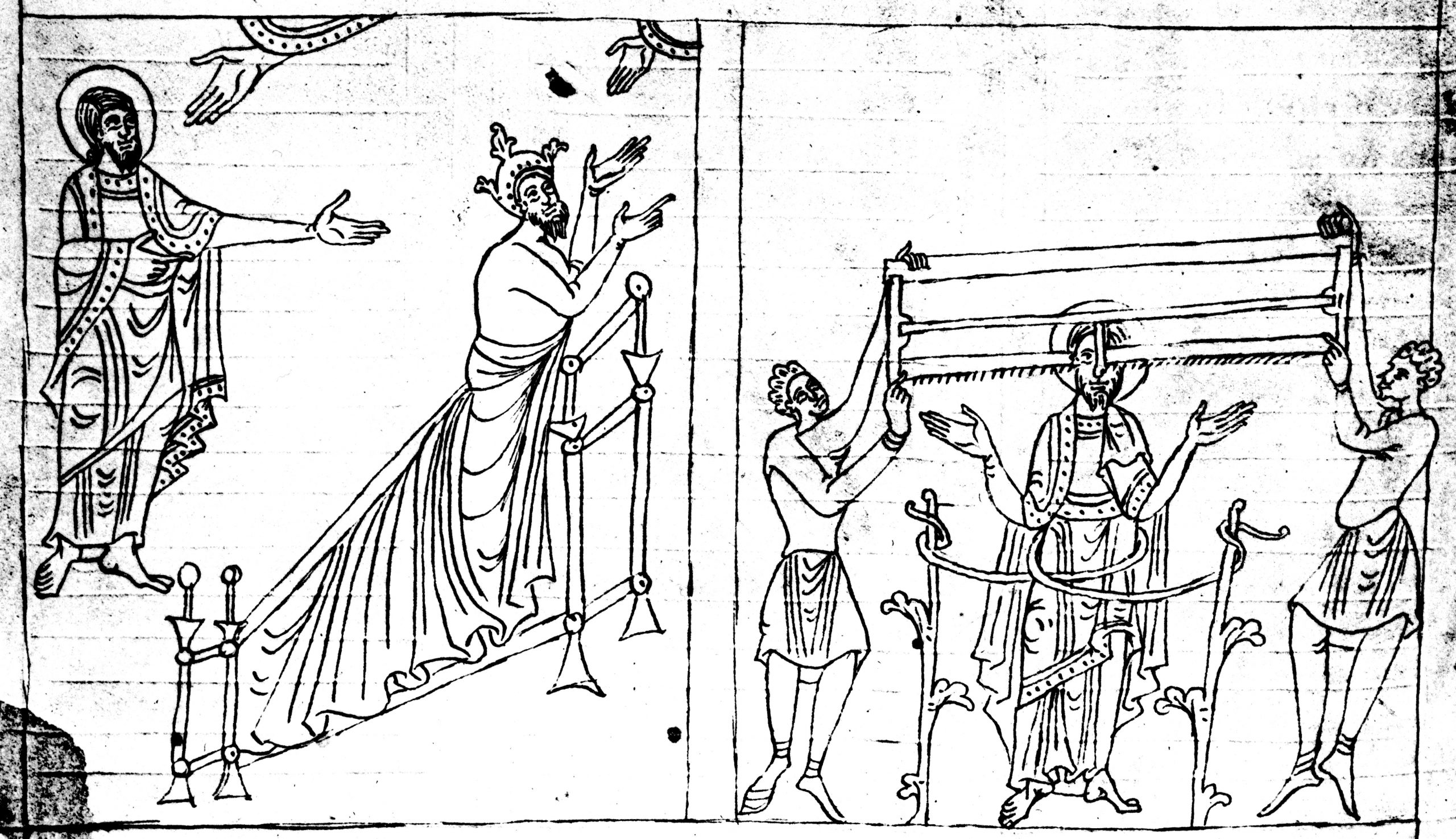
Figure 5. Isaiah Sawed in Two at the End, Roda Bible, mid-11th century.
Images of death and resurrection from within a tree recall al-Tha’labi’s version of the story of the martyrdom of Isaiah: “When their prophet Isaiah finished his speech, they came after him to kill him and he fled from them. A tree met him and split itself open for him and he entered it. The Devil came upon him and seized a fringe of his garment and showed it to them, so they took saws in its middle and sawed it until they cut it and cut him while he was in the midst.”[30] Isaiah’s death in the split tree was immediately followed by his rebirth and ascension to heaven.[31] Another Islamic version of this story associates the incident with Zacharias, father of John the Baptist, rather than with Isaiah.[32] Similar stories about Isaiah are found in Christian sources. See, for example, the illustrations from the Roda Bible shown above. At right, he meets death by being sawed in half while enclosed within a tree or vine, and, at left, we see a previous ascent to heaven.[33]
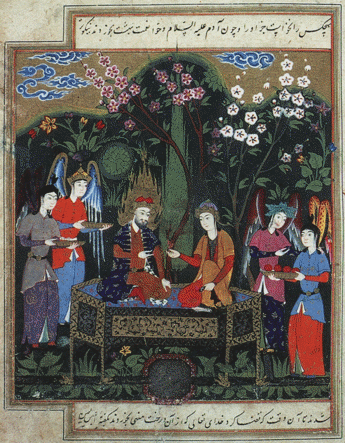
Figure 6. Adam and Eve Enthroned in Paradise, 16th century
Paralleling the idea presented in Essay #61 of the Tree of Life as a throne surrounded by a curtain of privacy is an Islamic legend that maintains that Adam and Eve reigned, as God’s vice-regents, from a throne in Eden within “a green silken tent… whereupon the curtains of the tent closed around them of their own accord.”[34] Significantly, the location of this tent parallels the central position of the Tree of Knowledge, immediately adjacent to the Tuba tree of Paradise.[35] Although the idea of a second co-located tree is only infrequently mentioned in Islamic tradition, note that the tent is specifically described as being the vegetal color of green and that the function of the curtains in the written description was, of course, to screen the throne—and the Tuba tree—from public sight, just as the Tree of Knowledge veiled the view of the Tree of Life in Ephrem’s depiction of Eden. Following the transgression of Adam and Eve, the “throne which had been erected for them in the tent thrust them away and cried, ‘Rebels, depart!’” God’s judgment then came upon them through “a voice from the tree”[36]—meaning the Tuba “tree of life.”
Sounding a similar theme, a petitioner in the Islamic mystical text, The Mother of Books, is warned by God that if someone were to move “the curtain and the veil the slightest bit [to] make the high king visible [i.e., to see God’s presence within the place of His full glory] … their spirit would leave their body.”[37] The protection that the veil affords those unprepared to look within is perhaps the reason that the Mandaeans call it “the veil of safety.”[38] By way of contrast, the Armenian Descendants of Adam says that the righteous Enoch refrained from looking at the heavens—which is equated to the fact that he did not eat of the:
… tree of meat [= tree of knowledge]. … And he drew linen over his face, and did not look at the heavens, on account of the sin of Adam… And God had mercy upon Enoch and transferred him to immortality.[39]
Note that in the Book of Mormon, a similar warning is given regarding the interpreters used by seers to enhance their prophetic vision: “no man can look in them except he be commanded, lest he should look for that he ought not and he should perish.”[40]
Nibley concludes that “dire consequences” may result from transgression of divinely set bounds, citing the case of “Pistis Sophia[, who] went beyond her ‘degree’ and, becoming ambitious, ‘looked behind the veil’ [and] fell from glory.”[41]

Figure 7. Diane Aposhian-Moffat, 1958-: Lehi’s Vision of Tree of Life, 2002
Conclusions
The central position of the Tree of Life in the Garden of Eden provides a parallel to the presence of God in the midst of His temple. Diane Aposhian-Moffat’s elegant, knotted rug appropriately shows the round tree against the middle of a rectangular field. The Tree of Knowledge may plausibly be taken as a symbol of the protective veil initially concealing the Tree of Life from Adam and Eve. After their transgression of God’s “first commandments,”[42] God placed cherubim and a flaming sword to prevent their premature entry into His presence and sent Adam and Eve away, “eastward.”
This essay is adapted from Jeffrey M. Bradshaw. Temple Themes in the Book of Moses. 2014 update ed. Salt Lake City, UT: Eborn Publishing, 2014. English: https://archive.org/details/150904TempleThemesInTheBookOfMoses2014UpdatedEditionSReading ; Spanish: http://www.templethemes.net/books/171219-SPA-TempleThemesInTheBookOfMoses.pdf, pp. 107–126.
Notes on Figures
Figure 1. Cambridge, British Library, Cotton MS Claudius B.iv, fol. 7 recto, http://www.bl.uk/manuscripts/Viewer.aspx?ref=cotton_ms_claudius_b_iv_f006v (accessed June 30, 2021). “A twelfth-century annotator has added commentary in Latin at the bottom of the pages and within the borders of the … image” (E. Mahan, And the Eyes).
Figure 2. Public Domain. From W. Smith, et al., Dictionary , 2:1307. Previously published in M. B. Brown, Girded, p. 137.
Figure 3. Courtesy of Alain Guilleux, alain.guilleux@free.fr.
Figure 4. Photographic Services and Permissions, New York Public Library Spencer, Pers. Ms. 1 dated 984 (1577). Previously published in R. Milstein, et al., Stories, illustration 21
Bibliothèque nationale de France, Cod. Lat. 6, in Vol. II, fol. 2v. Previously published in E. R. Goodenough, Dura Symbolism, 11, Figure 307.
Figure 6. Photographic Services and Permissions, New York Public Library, Spencer, Pers. Ms. 46. Previously published in R. Milstein, et al., Stories, plate 13.
Figure 7. Courtesy of Diane Aposhian-Moffat. Previously published in “I beheld a tree,” Ensign, January 2004, p. 44.
References
al-Tha’labi, Abu Ishaq Ahmad Ibn Muhammad Ibn Ibrahim. d. 1035. ‘Ara’is Al-Majalis Fi Qisas Al-Anbiya’ or "Lives of the Prophets". Translated by William M. Brinner. Studies in Arabic Literature, Supplements to the Journal of Arabic Literature, Volume 24, ed. Suzanne Pinckney Stetkevych. Leiden, Netherlands: Brill, 2002.
Alighieri, Dante. Commedia, 1321. In Princeton Dante Project, Princeton. https://dante.princeton.edu/. (accessed November 28, 2007).
Alter, Robert, ed. The David Story: A Translation with Commentary of 1 and 2 Samuel. New York City, NY: W. W. Norton, 1999.
Barker, Margaret. "Wisdom, the Queen of Heaven." In The Great High Priest: The Temple Roots of Christian Liturgy, edited by Margaret Barker, 229-61. London, England: T & T Clark, 2003.
Barnstone, Willis, and Marvin W. Meyer. "The Mother of Books (Umm al-kitab)." In The Gnostic Bible, edited by Willis Barnstone and Marvin Meyer. Translated by Willis Barnstone, 655-725. Boston, MA: Shambhala, 2003.
Bokovoy, David E., and John A. Tvedtnes. Testaments: Links Between the Book of Mormon and the Hebrew Bible. Tooele, UT: Heritage Press, 2003.
Bradshaw, Jeffrey M. "The Ezekiel Mural at Dura Europos: A tangible witness of Philo’s Jewish mysteries?" BYU Studies 49, no. 1 (2010): 4-49. https://scholarsarchive.byu.edu/byusq/vol49/iss1/2/.
Brown, Matthew B. "Girded about with a lambskin." Journal of Book of Mormon Studies 6, no. 2 (1997): 124-51.
Butterworth, Edric Allen Schofeld. The Tree at the Navel of the Earth. Berlin, Germany: Walter de Gruyter, 1970.
Chouraqui, André, ed. La Bible. Paris, France: Desclée de Brouwer, 2003.
Clark, E. Douglas. "Cedars and stars: Enduring symbols of cosmic kingship in Abraham’s encounter with Pharaoh." In Astronomy, Papyrus, and Covenant, edited by John Gee and Brian M. Hauglid. Studies in the Book of Abraham 3, 37-55. Provo, UT: Foundation for Ancient Research and Mormon Studies (FARMS), Brigham Young University, 2005.
Coles, Robert. The Secular Mind. Princeton, NJ: Princeton University Press, 1999.
Dan, Joseph. Jewish Mysticism. 4 vols. Northvale, NJ: Jason Aronson, 1998-1999.
Frazer, James George. 1922. The Golden Bough: A Study of Magic and Religion, Abridged ed. In Project Gutenberg. https://www.gutenberg.org/ebooks/3623. (accessed November 28, 2007).
Giorgi, Rosa. Anges et Démons. Translated by Dominique Férault. Paris, France: Éditions Hazan, 2003.
Goodenough, Erwin Ramsdell. Symbolism in the Dura Synagogue. 3 vols. Jewish Symbols in the Greco-Roman Period 9-11, Bollingen Series 37. New York City, NY: Pantheon Books, 1964.
Guilleux, Alain. Le Temple de Derr. Une Promenade en Egypte. http://alain.guilleux.free.fr/derr/lac_nasser_temple_derr.html. (accessed June 2).
Holland, Jeffrey R. Christ and the New Covenant: The Messianic Message of the Book of Mormon. Salt Lake City, UT: Deseret Book, 1997.
Huchel, Frederick M. E-mail message to Jeffrey M. Bradshaw, July 14, 2010.
Ibn Kathir, Ismail. d. 1373. Stories of the Prophets. Translated by Rashad Ahmad Azami. 2nd ed. Riyadh, Saudi Arabia: Dar-us-Salam Publications, 2003.
Kastler, Esthi. 2006. Commentaire du texte de Genèse 2.4b à 4.26. In Études bibliques, Fédération protestante de France. http://www.protestants.org/etudes-bibliques/genese/etude.htm. (accessed August 25, 2007).
Knibb, Michael A. "Martyrdom and Ascension of Isaiah." In The Old Testament Pseudepigrapha, edited by James H. Charlesworth. 2 vols. Vol. 2, 143-76. Garden City, NY: Doubleday and Company, 1983.
Lidzbarski, Mark, ed. Ginza: Der Schatz oder das Grosse Buch der Mandäer. Quellen der Religionsgeschichte, der Reihenfolge des Erscheinens 13:4. Göttingen and Leipzig, Germany: Vandenhoeck & Ruprecht, J. C. Hinrichs’sche, 1925. https://ia802305.us.archive.org/7/items/MN41563ucmf_2/MN41563ucmf_2.pdf. (accessed September 7, 2019).
Mahan, Emily. “And the eyes of them both were opened”: The moment of knowing in an Anglo-Saxon Bible (April 19, 2018). In Notre Dame Medieval Studies Research Blog. https://sites.nd.edu/manuscript-studies/2018/04/19/and-the-eyes-of-them-both-were-opened-the-moment-of-knowing-in-an-anglo-saxon-bible/. (accessed June 29, 2021).
Matt, Daniel C., ed. The Zohar, Pritzker Edition. Vol. 1. Stanford, CA: Stanford University Press, 2004.
Mead, George Robert Shaw, ed. 1921. Pistis Sophia: The Gnostic Tradition of Mary Magdalene, Jesus, and His Disciples (Askew Codex). Mineola, NY: Dover Publications, 2005.
Milstein, Rachel. "The stories and their illustrations." In Stories of the Prophets: Illustrated Manuscripts of Qisas al-Anbiya, edited by Rachel Milstein, Karin Rührdanz and Barbara Schmitz. Islamic Art and Architecture Series 8, eds. Abbas Daneshvari, Robert Hillenbrand and Bernard O’Kane, 105-83. Costa Mesa, CA: Mazda Publishers, 1999.
Milstein, Rachel, Karin Rührdanz, and Barbara Schmitz. Stories of the Prophets: Illustrated Manuscripts of Qisas al-Anbiya. Islamic Art and Architecture Series 8, ed. Abbas Daneshvari, Robert Hillenbrand and Bernard O’Kane. Costa Mesa, CA: Mazda Publishers, 1999.
Nibley, Hugh W. 1975. The Message of the Joseph Smith Papyri: An Egyptian Endowment. 2nd ed. Salt Lake City, UT: Deseret Book, 2005.
———. 1980. "Patriarchy and matriarchy." In Old Testament and Related Studies, edited by John W. Welch, Gary P. Gillum and Don E. Norton. The Collected Works of Hugh Nibley 1, 87-113. Salt Lake City, UT: Deseret Book, 1986.
Orlov, Andrei A. "On the polemical nature of 2 (Slavonic) Enoch: A reply to C. Böttrich." Journal for the Study of Judaism 34 (2003): 274-303.
———. "Resurrection of Adam’s body: The redeeming role of Enoch-Metatron in 2 (Slavonic) Enoch." Presented at the American Academy of Religion/Society of Biblical Literature Annual Meeting, Early Jewish and Christian Mysticism Group, Atlanta, GA, November 24, 2003. http://www.marquette.edu/maqom/oil.html. (accessed June 18).
———. The Enoch-Metatron Tradition. Texts and Studies in Ancient Judaism 107. Tübingen, Germany Mohr Siebeck, 2005.
Ostler, Blake T. "Clothed upon: A unique aspect of Christian antiquity." BYU Studies 22, no. 1 (1981): 1-15.
Sailhamer, John H. "Genesis." In The Expositor’s Bible Commentary, edited by Frank E. Gaebelein, 1-284. Grand Rapids, MI: Zondervan, 1990.
Savedow, Steve, ed. Sepher Rezial Hemelach: The Book of the Angel Rezial. Boston, MA: WeiserBooks, 2000.
Schmidt, Carl, ed. 1905. Pistis Sophia (Askew Codex). Translated by Violet MacDermot. Nag Hammadi Studies 9, ed. Martin Krause, James M. Robinson and Frederik Wisse. Leiden, The Netherlands: Brill, 1978.
Shakespeare, William. 1611. "The Tempest." In The Riverside Shakespeare, edited by G. Blakemore Evans, 1606-38. Boston, MA: Houghton Mifflin Company, 1974.
Shanks, Hershel. Jerusalem: An Archaeological Biography. New York City, NY: Random House, 1995.
Smith, Joseph, Jr. 1938. Teachings of the Prophet Joseph Smith. Salt Lake City, UT: Deseret Book, 1969.
Smith, William, and Samuel Cheetham. A Dictionary of Christian Antiquities Being a Continuation of ‘The Dictionary of the Bible’. 2 vols. Hartford, CT: The J. B. Burr Publishing Company, 1876, 1880. https://archive.org/details/christianantiqui01smituoft/page/n3/mode/2up ; http://www.archive.org/details/christianantiqui02smituoft. (accessed June 21, 2021).
Sparks, Jack Norman, and Peter E. Gillquist, eds. The Orthodox Study Bible. Nashville, TN: Thomas Nelson, 2008.
Spenser, Edmund. 1590/1596. The Faerie Queen. 2nd ed. Harlow, England: Pearson Education, Longman, 2007.
Stone, Michael E. "The Descendants of Adam." In Armenian Apocrypha Relating to the Patriarchs and Prophets, edited by Michael E. Stone, 84-87. Jerusalem, Israel: The Israel Academy of Sciences and Humanities, 1982.
Stordalen, Terje. Echoes of Eden: Genesis 2-3 and the Symbolism of the Eden Garden in Biblical Hebrew Literature. Leuven, Belgium: Peeters, 2000.
Virgil. The Aeneid of Virgil. Translated by John Conington. 3rd ed. London, England: Longmans, Green, 1919.
Weil, G., ed. 1846. The Bible, the Koran, and the Talmud or, Biblical Legends of the Mussulmans, Compiled from Arabic Sources, and Compared with Jewish Traditions, Translated from the German. New York City, NY: Harper and Brothers, 1863. Reprint, Kila, MT: Kessinger Publishing, 2006. http://books.google.com/books?id=_jYMAAAAIAAJ. (accessed September 8).
Wenham, Gordon J., ed. Genesis 1-15. Word Biblical Commentary 1: Nelson Reference and Electronic, 1987.
Wheeler, Brannon M. Prophets in the Quran: An Introduction to the Quran and Muslim Exegesis. Comparative Islam Studies, ed. Brannon M. Wheeler. London, England: Continuum, 2002.
Wirth, Diane E. Parallels: Mesoamerican and Ancient Middle Eastern Traditions. St. George, UT: Stonecliff Publishing, 2003.
Zlotowitz, Meir, and Nosson Scherman, eds. 1977. Bereishis/Genesis: A New Translation with a Commentary Anthologized from Talmudic, Midrashic and Rabbinic Sources 2nd ed. Two vols. ArtScroll Tanach Series, ed. Rabbi Nosson Scherman and Rabbi Meir Zlotowitz. Brooklyn, NY: Mesorah Publications, 1986.



In my little 2013 book about the atonement (The Heart of the Gospel) and its 2014 sequel about the priesthood (God’s Organizing Power) (both Eborn Books), I paraphrased what the Bible Dictionary says about fig trees: “The tree is one of the earliest to show its fruitbuds, which appear before the leaves; thus a fig tree with leaves would be expected to also have fruit.”
Therefore, the fig leaf apron demonstrates fruitfulness. It would first apply to the ability to produce mortal children, but in later contexts, would imply the possession of priesthood power to procreate eternally.